Introduction
There is no bandpass filtering on the
RX2 (really ADC2)
input of the 100D or 200D. While I live in a relatively quiet location,
it seemed like it still might be useful to have some preselection on
the RX2 input. At the same time, there were a few other odds and ends
hanging off the radio that would benefit from some consolidation into a
single, external unit. Thus the idea of an "ANAN Helper" unit was born.
The WU2O ANAN Helper consists of a bandpass filter for RX2, a Puresignal external switch, and opto-isolated PTT buffer outputs, all in a single enclosure.
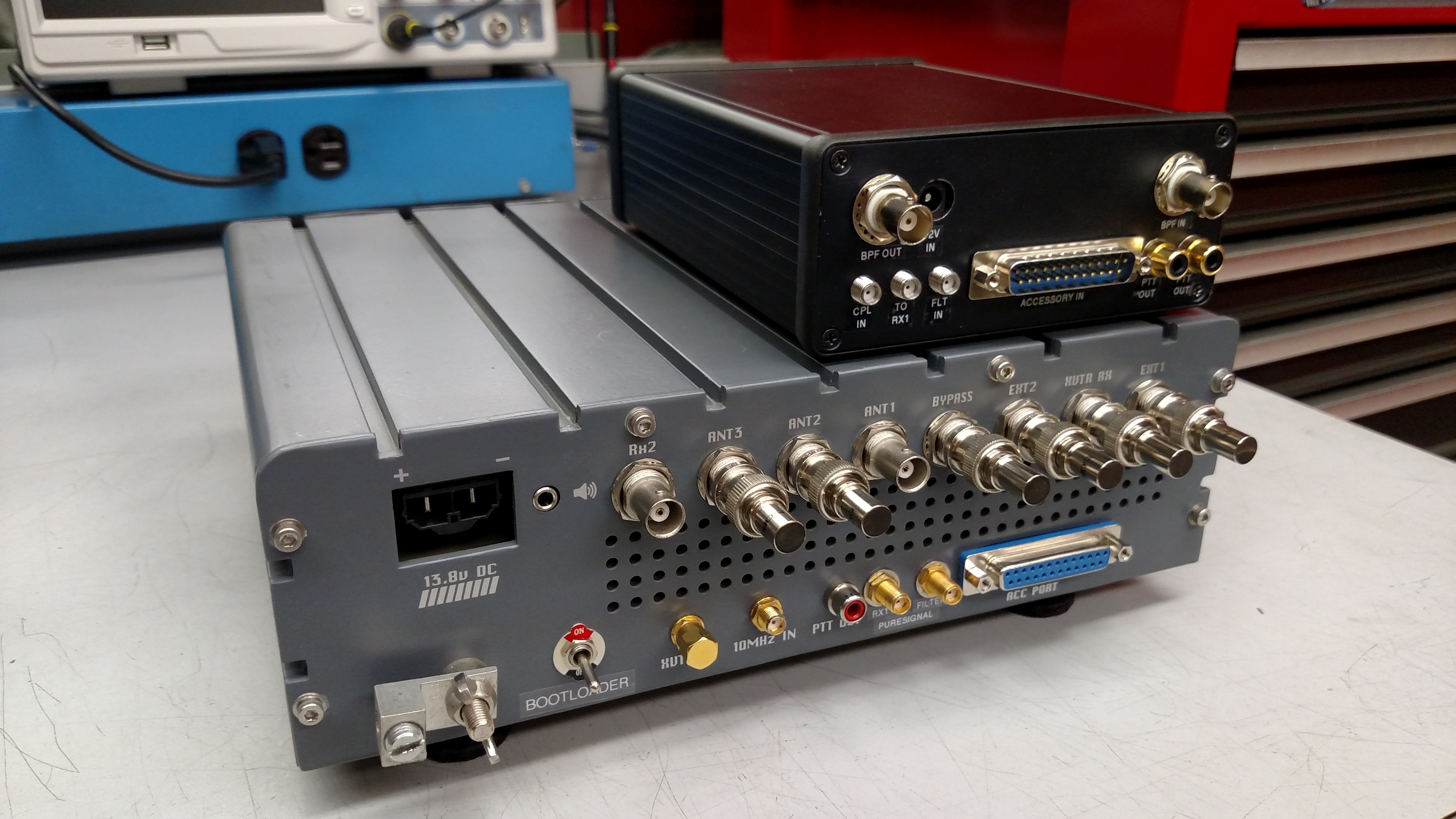
RX2 Preselector
A ready-made bandpass filter (BPF) circuit card assembly (CCA) from eb104.ru was used for the RX2 preselector. The eb104 card is ready-made to interface to the standard ANAN open collector outputs on the DB25 accessory connector, with pull-up resistors and a BCD-to-decimal decoder driving the switching already on the eb104 card. By using the "split pins" 4x3 setting in Setup > General > ANAN Ctrl, seven of the ten filters on the eb104 CCA can be controlled independently of RX1, and all ten filters as long as RX1 is on the same band (note that Thetis, when it is released, will have a 3x4 option which is perfect for doing this).
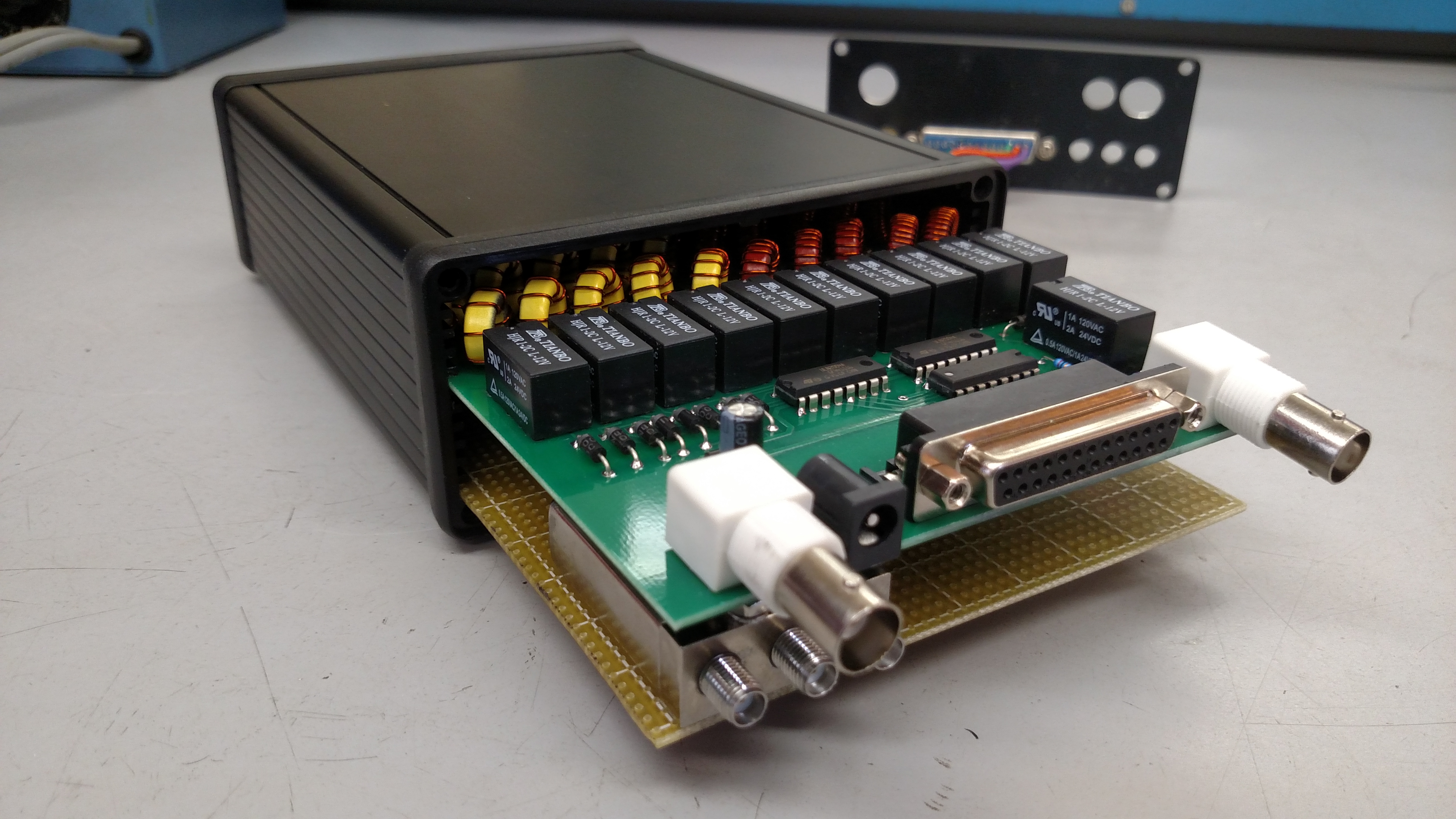
External PureSignal RF Switch
Since the crosstalk on the PA/filter CCA inside the 100D, particularly with the old Rev. 15 and 16 CCAs, is significant, many people have elected to modify their radios and use an external switch to route the coupler output directly into the Angelia or Orion RX1 input. W1AEX has an excellent discussion at his website on how and why this is done, so it won't be repeated here. The implementation in the ANAN Helper Unit uses a Dow-Key Microwave coaxial relay switch. These are often available on eBay for not much money.
PTT Buffer
PTT buffering is accomplished using a Toshiba TLP591B opto-coupler driving three separate IRF510 Power MOSFETs. The TLP591B accepts and isolates the PTT output signal on the accessory connector. One FET drives the Dow-Key coaxial relay, the other two each separately drive their own PTT output connector. Sure, using three was probably overkill, but IRF510s are cheap.
Construction
Construction was on stripboard cut to fit in the Hammond extruded enclosure. Nobody seems to use stripboard anymore. I don't know why, it's wonderful stuff. The Dow-Key coaxial switch, TLP591B and IRF510s are clearly visible in the photo.
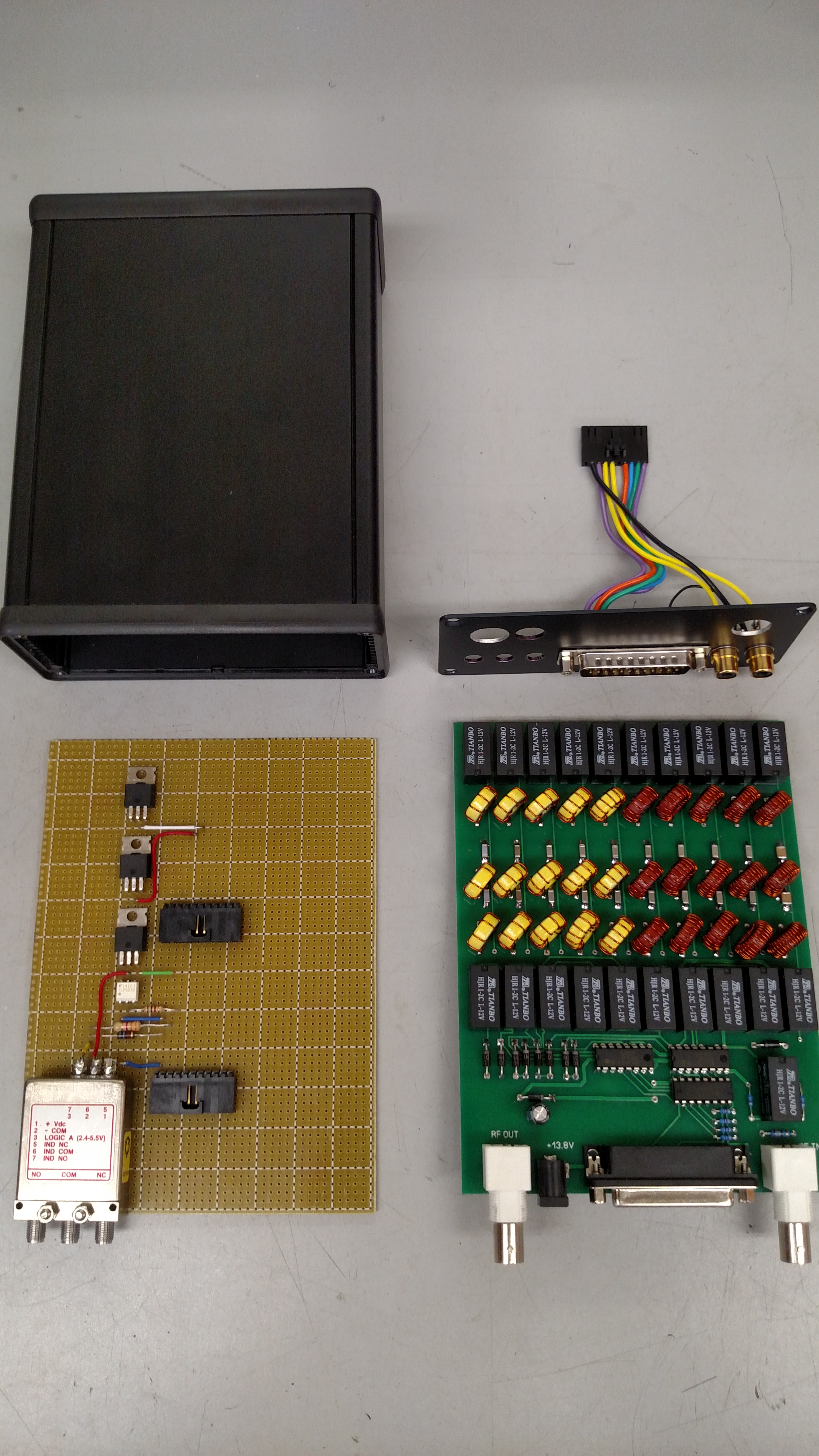
I connectorized both the front panel and the eb104 CCA because I like things to be easy to take apart. You never know when you might need to repair or modify something. The DB25 is front mounted to the panel so that it mates properly with cables.
You will notice that I did not utilize the DB25 connector on the eb104 CCA. The reasons why are many. First, I wanted to use a commercially made, fully shielded, 25 pin cable assemble, which I got from L-com. In particular I wanted the high quality commercial shielding, and I also wanted to support every single signal on the ANAN accessory connector in case I wanted to add other features to the Helper unit in the future. Since those cable assemblies are all pinned straight-through I had to mate to a connector with pinning that matched the radio. Second, if I had made my own cable and did use the eb104 connector there would have to be connections between the stripboard and the eb104 CCA anyway for power and PTT. Finally, as it turned out, the way the DB25 is mounted on the eb104 CCA has it sitting behind the front panel of the Hammond enclosure. This would require a very large opening in the front panel to allow a shielded backshell to mate with it.
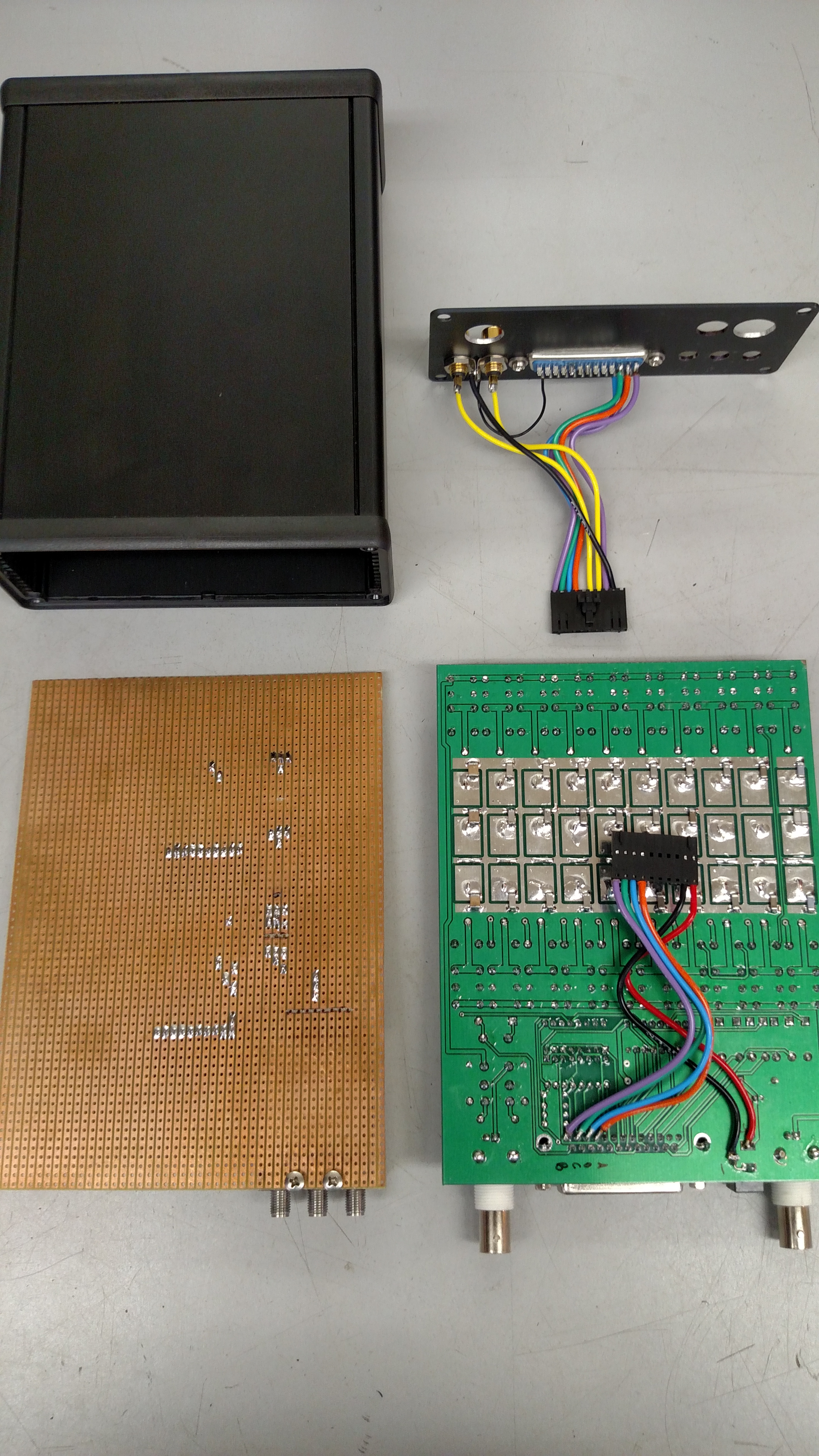
I was not particularly efficient in my parts placement, except that it is optimized for stripboard layout. Nevertheless there is plenty of room left on the stripboard. For example, while I'm strictly a VAC audio guy, if one was so inclined that room could easily be used for fully balanced transmit and receive audio interfaces, perhaps even a microphone pre-amp with phantom power. And there is plenty of room on the unused panel on the other end of the Hammond enclosure for two or three 1/4" TRS connectors.
Integration
All wired up and ready to go, the ANAN Helper fits quite neatly on the top of the radio, with plenty of room left over on the right-hand side of the radio for a small fan to cool that part of the heatsink where the RF power FETs are attached.
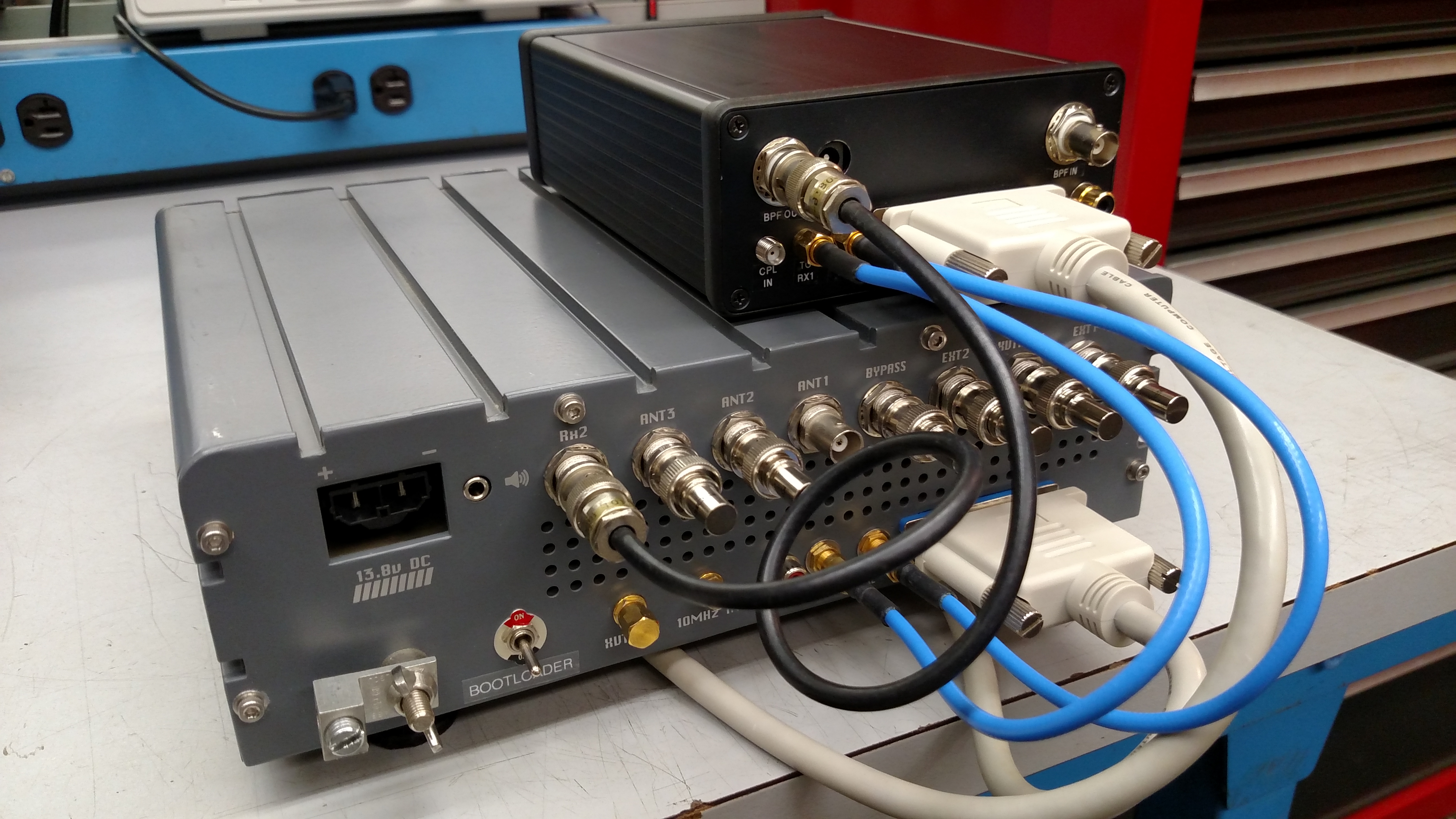
The WU2O ANAN Helper consists of a bandpass filter for RX2, a Puresignal external switch, and opto-isolated PTT buffer outputs, all in a single enclosure.

RX2 Preselector
A ready-made bandpass filter (BPF) circuit card assembly (CCA) from eb104.ru was used for the RX2 preselector. The eb104 card is ready-made to interface to the standard ANAN open collector outputs on the DB25 accessory connector, with pull-up resistors and a BCD-to-decimal decoder driving the switching already on the eb104 card. By using the "split pins" 4x3 setting in Setup > General > ANAN Ctrl, seven of the ten filters on the eb104 CCA can be controlled independently of RX1, and all ten filters as long as RX1 is on the same band (note that Thetis, when it is released, will have a 3x4 option which is perfect for doing this).

External PureSignal RF Switch
Since the crosstalk on the PA/filter CCA inside the 100D, particularly with the old Rev. 15 and 16 CCAs, is significant, many people have elected to modify their radios and use an external switch to route the coupler output directly into the Angelia or Orion RX1 input. W1AEX has an excellent discussion at his website on how and why this is done, so it won't be repeated here. The implementation in the ANAN Helper Unit uses a Dow-Key Microwave coaxial relay switch. These are often available on eBay for not much money.
PTT Buffer
PTT buffering is accomplished using a Toshiba TLP591B opto-coupler driving three separate IRF510 Power MOSFETs. The TLP591B accepts and isolates the PTT output signal on the accessory connector. One FET drives the Dow-Key coaxial relay, the other two each separately drive their own PTT output connector. Sure, using three was probably overkill, but IRF510s are cheap.
Construction
Construction was on stripboard cut to fit in the Hammond extruded enclosure. Nobody seems to use stripboard anymore. I don't know why, it's wonderful stuff. The Dow-Key coaxial switch, TLP591B and IRF510s are clearly visible in the photo.

I connectorized both the front panel and the eb104 CCA because I like things to be easy to take apart. You never know when you might need to repair or modify something. The DB25 is front mounted to the panel so that it mates properly with cables.
You will notice that I did not utilize the DB25 connector on the eb104 CCA. The reasons why are many. First, I wanted to use a commercially made, fully shielded, 25 pin cable assemble, which I got from L-com. In particular I wanted the high quality commercial shielding, and I also wanted to support every single signal on the ANAN accessory connector in case I wanted to add other features to the Helper unit in the future. Since those cable assemblies are all pinned straight-through I had to mate to a connector with pinning that matched the radio. Second, if I had made my own cable and did use the eb104 connector there would have to be connections between the stripboard and the eb104 CCA anyway for power and PTT. Finally, as it turned out, the way the DB25 is mounted on the eb104 CCA has it sitting behind the front panel of the Hammond enclosure. This would require a very large opening in the front panel to allow a shielded backshell to mate with it.

I was not particularly efficient in my parts placement, except that it is optimized for stripboard layout. Nevertheless there is plenty of room left on the stripboard. For example, while I'm strictly a VAC audio guy, if one was so inclined that room could easily be used for fully balanced transmit and receive audio interfaces, perhaps even a microphone pre-amp with phantom power. And there is plenty of room on the unused panel on the other end of the Hammond enclosure for two or three 1/4" TRS connectors.
Integration
All wired up and ready to go, the ANAN Helper fits quite neatly on the top of the radio, with plenty of room left over on the right-hand side of the radio for a small fan to cool that part of the heatsink where the RF power FETs are attached.
